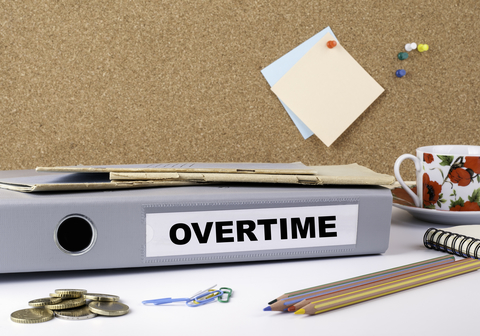 The Department of Labor’s Final Rule on overtime pay that would have dramatically transformed payroll policies had been scheduled to go into effect on December 1, 2016. However, on November 22, a federal district court granted an injunction pending the outcome of a legal challenge to the rule. This is expected to take months or more. And in the meantime, there’s a new Administration about to begin.
The Department of Labor’s Final Rule on overtime pay that would have dramatically transformed payroll policies had been scheduled to go into effect on December 1, 2016. However, on November 22, a federal district court granted an injunction pending the outcome of a legal challenge to the rule. This is expected to take months or more. And in the meantime, there’s a new Administration about to begin.
What does this uncertain state of affairs mean to you?
Details about the final rule
The federal Fair Labor Standards Act (FLSA) requires employees who work more than 40 hours a week to receive overtime pay (“time and a half”). However, this overtime rule does not apply to certain employees, such as executive, administrative, and professional employees with certain responsibilities and a minimum salary amount.
The final rule didn’t change the responsibilities aspect of the exemption but raised the salary threshold at which an employee is exempt from overtime pay rules under the federal Fair Labor Standards Act: from $455 per week ($23,660 annually) to $913 per week ($47,476 annually). And up to 10% of this amount could be met with bonuses, commissions, and other forms of compensation paid at least quarterly; this was not previously allowed. The dollar amount was scheduled to be increased automatically every three years.
More details about the final rule were discussed in an earlier blog – 10 Myths about Overtime Rules.
Post-injunction actions
Employers had scrambled to comply with the new rules, taking various actions. Some, for example, raised pay for employees they wanted to remain exempt under the higher salary amount. Now what? There are some actions to consider:
- Continue compliance. Most employers have already implemented the new rule by increasing pay for workers intended to be exempt, and it seems that the majority of employers are staying the course by leaving the pay increases in place. Manta found that 84% are staying the course.
- Suspend changes. Pay increases that had been scheduled to go into effect under the Final Rule but were not yet implements can be frozen for now, allowing employers to see what the status of the rule will be.
- Roll back increases. Employer can cancel pay increases, but this option raises two serious problems: (1) at-will employees, which are those without explicit employment contracts, won’t be happy with the reduction in their compensation and may seek other employment in an ever-improving economy or possibly take legal action against the employer, and (2) state rules require notice of pay changes and employers may not have time to comply with changes.
Be sure to take state law rules into account, such as notice requirements before employers can make any changes in pay. For example, California and New York require 7 days’ notice before making such a change. More than a dozen other states have similar notice requirements.
Predictions for the future
The Department of Labor filed a notice to appeal the district court ruling with the Court of Appeals for the Fifth Circuit. That court could lift the injunction.
Other possible actions that may ensue from the DOL under the new Administration:
- Withdrawal of the Final Rule
- Issuance of a new rule that would not be objectionable to the parties that contested the Final Rule
Bottom line: We don’t know what will happen, but we have to stay alert to developments.


